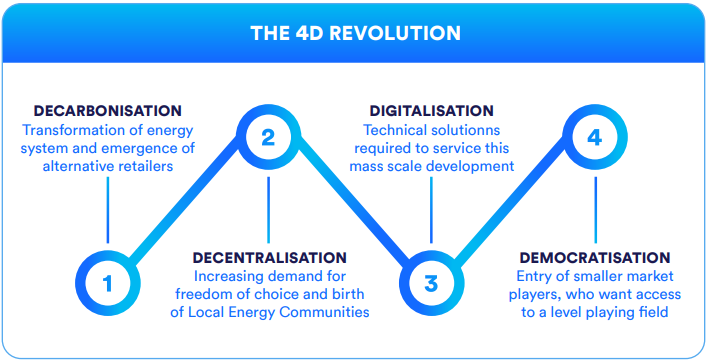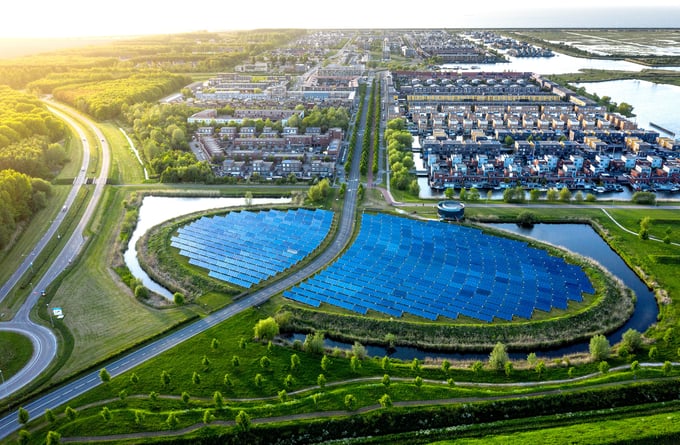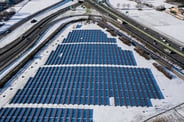The 4D revolution is transforming the energy market in the UK and beyond – but what is it, and how should retailers respond?
The energy sector is going through a period of complete transformation, thanks to four powerful driving forces known as the “four Ds”. This so-called “4D revolution” is changing the way that many countries generate, distribute and purchase power.

Decarbonisation
The most powerful driver of all is the first D: decarbonisation. For the best chance of preserving life as we know it on this planet and avoiding consequences such as mass species extinction, we need to limit global warming to below 1.5°C over pre-industrial levels. But this requires a drastic reduction in the amount of fossil fuels we burn as a planet, and the change needs to happen fast. This means big investment in the generation of renewables and a swift move away from fossil fuels.
On a national level, we can see this shift happening already. Many countries are already on a trajectory to boost the share of renewables in their mix year on year. The UK is one of the leaders, with around 40% of total electricity coming from renewable sources. Internationally, COP26 saw over 40 countries pledge to phase out coal, the dirtiest fossil fuel source – and the list includes some of the world’s biggest coal users, such as Poland and Indonesia.
But national targets are a blunt instrument for effecting real change. That is where the second D comes in: decentralisation.
Decentralisation
The best route to change the fuel mix quickly is to move away from the old model of large, centralised power stations towards a new normal of distributed generation on a smaller scale. As well as getting new sources of renewable energy up and running more quickly, this model offers the potential for greater control and involvement at a community level. For many large corporate energy users, this trend is an opportunity to show corporate social responsibility by directly supporting local green generators – provided that they can prove this through their supply data.
Digitalisation
As we move to this new model, data becomes absolutely vital for the transformation of the energy market in the UK. The third D is digitalisation, because it is essential to have access to information about what is happening in the grid at any given point in time. High-volume energy customers are increasingly used to smart meters that collect data on a half-hourly basis. It isn’t surprising that they now want more granular data about exactly where their energy supply comes from and how the mix in the grid is fluctuating throughout the day.
Government policy is another factor making digitalisation essential, as the UK government explores regulatory changes that will oblige suppliers to provide users with better data. It is highly likely that digital “data by default” will become a legal minimum, with suppliers expected to provide energy consumption data to customers without being asked for it first.
Democratisation
All this is leading towards a profound change for the energy market in the UK: democratisation. This fourth D is what happens when energy production moves away from the old, centralised model to allow a diversity of smaller players. The campaign for a Local Electricity Bill demonstrates that people in the UK are keen for this new model to become a reality. Many people want to see more direct links between local generators and local energy consumers, rather than having to go through big suppliers. (So far the proposed Bill has the public support of 291 out of the UK’s 650 MPs.)
The climate imperative
Although we talk about the four Ds, it is the first D – decarbonisation – that is driving the other three and effecting these profound changes. As the Local Electricity Bill campaign makes clear: “We are not meeting our climate change targets – the UK is way off track to meet the fourth and fifth carbon emissions budgets of the Climate Change Act. Community-scale renewable energy has huge potential to help solve this problem and benefit local economies, but it is currently blocked from doing so.”
Benefits such as greater consumer choice and stronger local economies are positive, but the 4D revolution is ultimately about the need to cut emissions, and fast. We can expect to see rapid changes in 2022 and beyond, and suppliers who understand what is really happening in the UK energy market will be at a great advantage. Our report Trends and opportunities for energy retailers in a net zero market gives a full analysis of what is happening and how to seize the opportunities presented by the 4D revolution. Download your free copy today.



